Table of Contents
Discover the Sweet World of Traditional Asian Desserts
Asian desserts are a delightful and diverse reflection of the continent’s rich culinary heritage. From the chewy textures of Japanese mochi to the creamy sweetness of Thai mango sticky rice, these desserts offer a unique combination of flavors and techniques that have been perfected over centuries. Each region in Asia has its own signature sweets, often influenced by local ingredients and cultural traditions. Whether it’s the use of coconut milk in Southeast Asia or the delicate flavor of matcha in Japan, the ingredients and methods behind Asian desserts offer an exciting journey for any home cook or dessert lover.
What makes Asian desserts truly special is the balance of flavors. Sweet, savory, bitter, and sometimes even floral notes come together to create an unforgettable experience. These desserts aren’t just about indulgence—they often carry cultural significance, from celebrating festivals to offering symbolic meaning. In this post, we’ll explore the art of making traditional Asian desserts at home, guiding you through iconic recipes and the essential ingredients that make these sweets so irresistible. Whether you’re a beginner or an experienced baker, you’ll find inspiration to bring the flavors of Asia right into your kitchen.
RELATED : Crab Brulee Recipe: How To Make This Elegant Seafood Dessert
What Are Traditional Asian Desserts?
Understanding the Basics of Asian Desserts
Traditional Asian desserts are a diverse group of sweets, often deeply rooted in the cultures and culinary practices of their respective countries. Unlike many Western desserts, which typically emphasize rich, sugary flavors, Asian desserts tend to focus on a balance of textures and flavors, often combining sweet, savory, and even floral notes in unique ways. While Western sweets may rely on dairy and chocolate as core ingredients, Asian desserts frequently make use of natural elements such as coconut, rice, beans, and exotic fruits.
The variety within Asian desserts is vast. For example, Japanese sweets, or wagashi, emphasize delicate flavors and textures, often incorporating ingredients like red bean paste, matcha, and glutinous rice. On the other hand, desserts from China may feature ingredients like lotus seed paste, sesame, or jellied coconut. Southeast Asia’s offerings, such as Thai and Filipino desserts, often utilize tropical fruits like mango, coconut, and jackfruit, while also incorporating techniques like steaming and frying. In Korea, desserts often feature ingredients like rice flour, sweet potato, and the syrupy sweetness of honey or brown sugar.
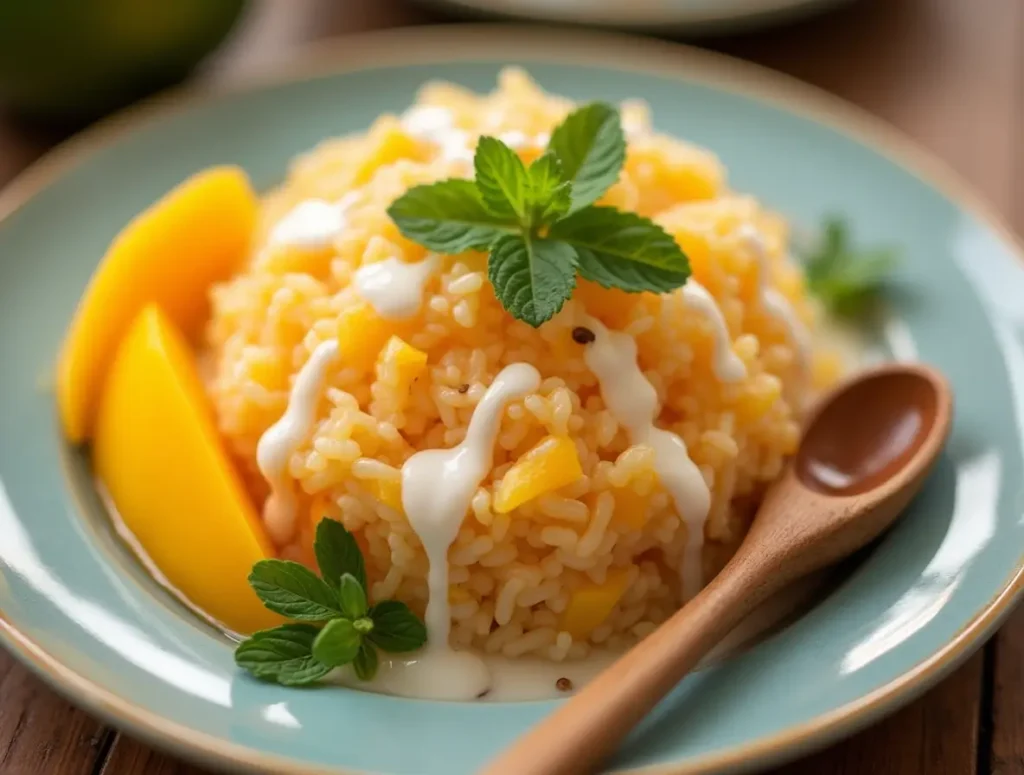
Cultural Significance of Asian Sweets
In many Asian cultures, food isn’t just for sustenance—it carries great symbolic and ceremonial importance, especially when it comes to desserts. For centuries, these sweets have been used to celebrate festivals, mark milestones, and honor ancestors. In fact, many traditional Asian desserts are closely tied to cultural and religious rituals.
For instance, in China, mooncakes are a must-have during the Mid-Autumn Festival, where families come together to celebrate the harvest and the full moon. These dense pastries, often filled with lotus seed paste and salted egg yolks, are shared among family members and friends as a symbol of unity and prosperity.
In Japan, mochi plays a central role in New Year’s celebrations, and it’s also used in ceremonies to mark significant life events like weddings. Its chewy texture symbolizes resilience, and it’s often filled with sweet red bean paste or served with fruit or ice cream.
Meanwhile, in Thailand, mango sticky rice is a dessert that’s often enjoyed during the summer, when mangoes are in season. Its sweet, creamy flavor comes from coconut milk, which is a common ingredient in many Thai sweets. The dessert is often served during celebrations such as Songkran, the Thai New Year, symbolizing good fortune and prosperity.
Common Ingredients in Asian Desserts
Asian desserts are distinguished by the unique ingredients that form their foundation. Unlike many Western sweets, which are dairy-based, Asian desserts often rely on plant-based ingredients, resulting in lighter, more subtle flavors.
- Red Bean Paste: One of the most ubiquitous ingredients in Asian desserts, red bean paste (or anko) is commonly used as a filling for dumplings, mochi, and pastries. Made from sweetened azuki beans, it provides a smooth and earthy sweetness. In Japan, red bean paste is used in traditional confections like taiyaki (fish-shaped pastry) and dorayaki (red bean-filled pancakes).
- Coconut Milk: A staple in Southeast Asian desserts, coconut milk lends a creamy richness to dishes like mango sticky rice and coconut tapioca pudding. It’s also used in beverages like Thai iced tea and coconut smoothies, adding both sweetness and richness without being overpowering.
- Tapioca Pearls: Often used in Asian desserts like sago pudding (a sweet, tapioca-based dish served with coconut milk and fruit), these small, chewy pearls add texture and are a popular component in bubble tea. Tapioca pearls are also used in Chinese sweet soups like tangyuan (glutinous rice balls) served in a sweet syrup, often enjoyed during the Lantern Festival.
- Matcha (Green Tea Powder): Used extensively in Japanese desserts, matcha adds an earthy, slightly bitter flavor that complements the sweetness of confections. It’s used in treats like matcha mochi, matcha ice cream, and matcha-flavored cakes.
- Glutinous Rice: This sticky rice variety is often used in Asian desserts like mochi and zongzi (rice dumplings), giving the dishes their signature chewy texture. Glutinous rice is especially prevalent in Southeast Asia, where it’s used in dishes like kue cubir (sweet Indonesian rice cakes) and suman (Filipino rice cakes wrapped in banana leaves).
- Lotus Seed Paste: Used primarily in Chinese desserts, lotus seed paste is a smooth, creamy paste made from dried lotus seeds. It’s often used as a filling for mooncakes, baozi (buns), and sweet dumplings. The paste has a naturally mild sweetness and a smooth texture, making it a favorite for many traditional pastries.
Popular Traditional Asian Desserts You Should Try
Asia is home to some of the most delicious and unique desserts in the world. Whether you’re craving something chewy, creamy, or flaky, traditional Asian desserts are sure to satisfy your sweet tooth. Here are three iconic Asian desserts you should try making at home.
Mochi: A Japanese Delight
Mochi is a beloved Japanese dessert made from glutinous rice that’s pounded into a sticky, doughy texture. It’s a versatile treat that can be enjoyed in various forms, and its chewy texture makes it a fun and satisfying dessert.
Different Variations of Mochi:
- Plain Mochi: The simplest form, often served as a chewy, sweet rice cake.
- Mochi with Fillings (Daifuku): A popular variation where mochi is stuffed with a sweet filling like red bean paste, matcha cream, or strawberries. Daifuku is commonly eaten during festivals and is known for its soft and chewy texture combined with the sweet fillings.
- Ice Cream Mochi: A modern twist, where small balls of ice cream are encased in mochi dough, offering a cool and chewy experience that’s particularly popular in many parts of the world today.
Recipe Idea: How to Make Mochi at Home Making mochi from scratch might seem intimidating, but it’s quite simple. Here’s a basic step-by-step guide:
- Ingredients: Glutinous rice flour (mochi flour), sugar, water, cornstarch (for dusting), and optional fillings like red bean paste or fruit.
- Instructions:
- In a mixing bowl, combine glutinous rice flour and sugar.
- Slowly add water to form a smooth batter.
- Steam the mixture for about 20-30 minutes, stirring occasionally to prevent lumps.
- Once cooked, transfer to a dusted surface and knead until smooth.
- Roll out small portions, stuff with your chosen filling (e.g., red bean paste), and shape into a ball.
- Dust with cornstarch to prevent sticking, and serve fresh.
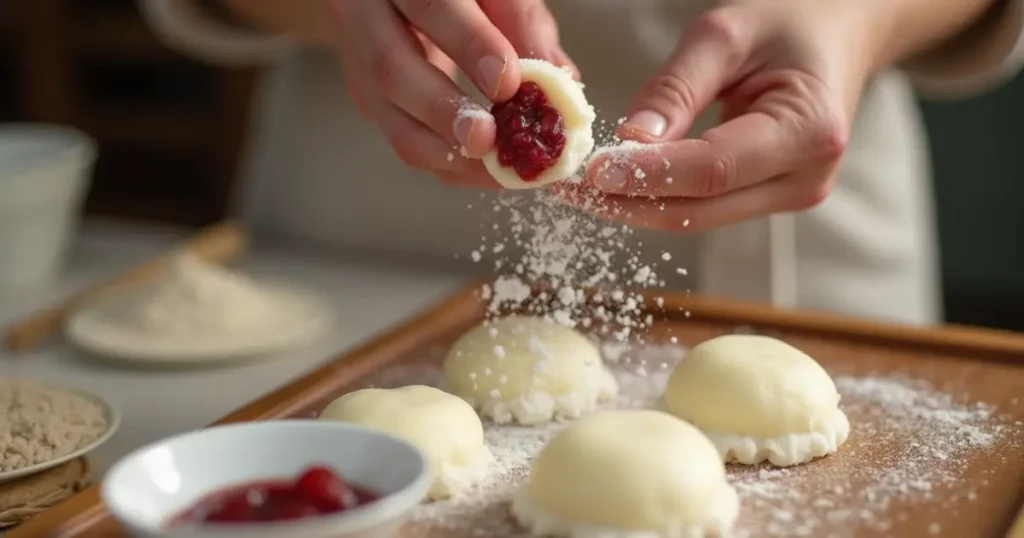
Mango Sticky Rice (Khao Niew Mamuang)
One of Thailand’s most famous and loved desserts, Mango Sticky Rice (Khao Niew Mamuang) combines the rich sweetness of ripe mangoes with sticky, coconut-flavored rice. This simple yet flavorful dessert has gained worldwide popularity due to its delightful blend of textures and tropical flavors.
Why It’s So Popular: Mango sticky rice is often enjoyed during Thailand’s summer months when mangoes are in peak season. It’s commonly served during festivals and special occasions, making it a symbol of Thai hospitality. The combination of sweet coconut rice with the fragrant, juicy mango creates a dessert that’s both refreshing and indulgent.
Recipe Idea: How to Prepare the Perfect Mango Sticky Rice Here’s how you can recreate this classic dessert at home:
- Ingredients: Glutinous rice, coconut milk, sugar, salt, ripe mangoes, and sesame seeds (optional).
- Instructions:
- Cook glutinous rice according to package instructions, usually by steaming it for a soft and sticky texture.
- While the rice cooks, mix coconut milk, sugar, and a pinch of salt in a saucepan and heat gently until the sugar dissolves.
- Once the rice is done, stir the coconut mixture into the rice and let it sit for about 15 minutes to absorb the flavor.
- Peel and slice the mangoes into thin strips.
- Serve the coconut rice with mango slices on top, and garnish with sesame seeds or mung beans if desired.
Chinese Egg Tarts
Chinese Egg Tarts (蛋挞, Dàn tà) are a popular pastry found in Chinese bakeries around the world. These custard-filled tarts have a smooth, silky texture and a flaky, buttery crust that’s both delicate and satisfying. Though originally inspired by the Portuguese pastéis de nata, they’ve become a staple in Chinese cuisine, especially in Hong Kong and Guangdong.
Why Egg Tarts Are So Loved: Egg tarts are a perfect balance of sweetness and richness, making them an irresistible treat. Their golden, caramelized custard filling is encased in a crisp, flaky pastry shell that contrasts beautifully with the creamy center. You can often find egg tarts at dim sum restaurants or bakeries, and they’re a favorite snack for tea time.
Recipe Idea: Easy Steps for Creating the Best Egg Tarts Here’s a simple recipe to try at home:
- Ingredients: Puff pastry, eggs, sugar, evaporated milk, vanilla extract, and a pinch of salt.
- Instructions:
- Preheat your oven to 375°F (190°C).
- Roll out the puff pastry and cut into circles to fit into your tart tin or muffin pan.
- Whisk eggs, sugar, evaporated milk, and vanilla extract in a bowl until smooth.
- Pour the custard mixture into the prepared tart shells, filling each about 3/4 full.
- Bake for 15-20 minutes until the custard is set and the pastry is golden brown.
- Allow the tarts to cool slightly before serving.
These traditional Asian desserts are not only delicious but also a fun way to explore different cultures through their sweet treats. From the chewy goodness of mochi to the tropical flavors of mango sticky rice and the classic egg tarts, each dessert brings something unique to the table. Try these recipes at home and bring the flavors of Asia into your kitchen!
Step-by-Step Recipes for Classic Asian Desserts
How to Make Traditional Mochi at Home
Ingredients:
- 1 cup sweet rice (also known as glutinous rice)
- 1 cup water
- 1/4 cup sugar (optional, for sweetness)
- Cornstarch or potato starch (for dusting)
- Red bean paste or other fillings (optional)
Instructions:
- Prepare the Sweet Rice: Begin by rinsing the sweet rice in cold water to remove any excess starch. Soak the rice in water for 6-8 hours, or overnight, to allow it to soften.
- Cook the Rice: Drain the soaked rice and place it in a steamer basket lined with cheesecloth or parchment paper. Steam the rice for 30-40 minutes until it’s soft and sticky.
- Mash the Rice: Once the rice is cooked, transfer it to a flat surface and begin to mash it with a pestle or rolling pin, using a small amount of water if needed to prevent sticking. Be careful—it will be hot!
- Shape the Mochi: Once the rice is smooth and pliable, divide it into small portions and roll them into balls or discs. If you’re using a filling (like red bean paste), flatten each ball and place a small amount of filling in the center before sealing it.
- Dust and Serve: Coat each mochi with cornstarch or potato starch to prevent them from sticking together. Serve immediately or store them in an airtight container for up to 2 days.
Tips for Achieving the Perfect Texture:
- The key to mochi’s chewy texture lies in using sweet (glutinous) rice. Avoid using regular rice as it won’t provide the same soft, sticky consistency.
- Make sure to mash the rice thoroughly to remove any lumps. If you want mochi with a smoother texture, you can blend the steamed rice after mashing.
- Dust your hands and the mochi generously with starch during shaping to prevent sticking.
Mango Sticky Rice Recipe
Ingredients:
- 1 cup glutinous rice
- 1 1/2 cups coconut milk
- 1/4 cup sugar
- Pinch of salt
- 2 ripe mangoes, peeled and sliced
- Sesame seeds (optional, for garnish)
- Fresh mint (optional, for garnish)
Instructions:
- Prepare the Rice: Rinse the glutinous rice until the water runs clear, then soak it for 3-4 hours. Drain the rice and steam it in a bamboo or metal steamer for 20-30 minutes, until soft and sticky.
- Make the Coconut Sauce: In a saucepan, heat the coconut milk with sugar and a pinch of salt. Stir occasionally until the sugar dissolves. Bring it to a gentle simmer, then remove from heat.
- Combine Rice and Coconut Milk: Once the rice is cooked, transfer it to a mixing bowl. Pour the coconut sauce over the rice, stirring gently to combine. Let it sit for 20 minutes to allow the rice to absorb the coconut milk.
- Serve the Mango Sticky Rice: To serve, place a portion of the coconut rice on a plate and top with the sliced mangoes. Garnish with sesame seeds or fresh mint for extra flavor.
Variations:
- Add Sesame Seeds: A sprinkle of toasted sesame seeds adds a delicious crunch to balance the creamy rice and mango.
- Coconut Flakes: Some variations of mango sticky rice include toasted coconut flakes for extra texture and flavor.
- Topping with Coconut Cream: For a richer flavor, drizzle additional coconut cream on top of the rice before serving.
Making Chinese Sesame Balls (Jian Dui)
Ingredients:
- 1 cup glutinous rice flour
- 1/4 cup sugar
- 1/2 cup water
- 1/4 tsp baking powder
- 1/2 cup red bean paste (or any other sweet filling)
- Sesame seeds (for coating)
- Vegetable oil (for frying)
Instructions:
- Prepare the Dough: In a mixing bowl, combine glutinous rice flour, sugar, baking powder, and water. Mix until it forms a smooth dough. Let it rest for 30 minutes to ensure the dough becomes pliable.
- Shape the Sesame Balls: Divide the dough into small portions and roll each into a ball. Flatten the balls, then place a small spoonful of red bean paste in the center. Seal the dough around the paste and shape it back into a ball.
- Coat with Sesame Seeds: Roll each ball in sesame seeds, ensuring they are completely coated.
- Fry the Sesame Balls: Heat the vegetable oil in a deep pan or wok over medium heat. Fry the sesame balls in batches, turning them occasionally, until they are golden brown and crispy on all sides. This should take about 3-5 minutes.
- Drain and Serve: Remove the sesame balls from the oil and drain on paper towels to remove excess oil. Let them cool slightly before serving.
Tips for Frying and Achieving the Perfect Golden-Brown Color:
- Oil Temperature: Ensure the oil is at the right temperature (around 350°F/175°C). If the oil is too hot, the sesame balls will brown too quickly and remain raw inside. If the dough is too cold, it will soak up too much oil.
- Fry in Batches: Don’t overcrowd the pan—fry the sesame balls in small batches to ensure they cook evenly.
- Rest the Dough: Allowing the dough to rest for at least 30 minutes helps it firm up, making it easier to shape and fry.
These step-by-step recipes will guide you through making these classic and beloved Asian desserts. From the chewy, rice-filled mochi to the crispy, sesame-coated Jian Dui, each dessert brings its own unique flavors and textures that will transport you straight to the heart of Asia. Enjoy!
Essential Ingredients in Asian Desserts and Where to Find Them
To truly master the art of making traditional Asian desserts, understanding the essential ingredients is key. Many of these ingredients are staple items in Asian kitchens and are used across various cultures, offering unique flavors and textures that make Asian desserts so special. Below, we’ll explore three key ingredients—red bean paste, matcha, and tapioca pearls—and provide insights on how to use them, as well as tips on where to find them.
Red Bean Paste: A Versatile Asian Ingredient
Red bean paste, or anko, is one of the most beloved ingredients in traditional Asian desserts. It’s made from cooked adzuki beans, sweetened with sugar, and sometimes flavored with a hint of salt. Its smooth, creamy texture and subtly sweet flavor make it a perfect filling for many Asian sweets, such as mochi, dorayaki (Japanese pancake sandwiches), and mooncakes (traditional Chinese pastries). The versatility of red bean paste means that it can be incorporated into both savory and sweet dishes, adding depth and richness.
How to Make Homemade Red Bean Paste: Making red bean paste at home is surprisingly simple. Here’s a basic guide:
- Ingredients: 1 cup of adzuki beans, 1/2 cup of sugar, a pinch of salt, and water.
- Instructions:
- Wash the adzuki beans thoroughly and place them in a pot with water. Bring to a boil and then simmer for about 1 hour, or until the beans are soft.
- Drain the beans and return them to the pot. Add sugar and a pinch of salt to taste, then mash the beans into a smooth paste. For a smoother consistency, you can blend it using a food processor.
- Store your homemade paste in an airtight container in the fridge for up to a week.
Where to Find Red Bean Paste: If you don’t want to make red bean paste from scratch, it’s easy to find pre-made versions at most Asian grocery stores. Look for cans labeled “sweet red bean paste” or “anko.” You can also find it online on platforms like Amazon or specialty Asian food retailers.
Matcha: The Flavor of Japan
Matcha, a finely ground powder made from specially grown green tea leaves, is a key ingredient in many Japanese desserts. Its vibrant green color and unique flavor—a combination of earthy, bitter, and subtly sweet notes—make it a favorite for creating indulgent treats like matcha ice cream, matcha cakes, and matcha-flavored mochi.
Matcha’s role in desserts goes beyond just flavor; it’s also packed with antioxidants and offers a natural energy boost, making it a popular ingredient in health-conscious sweets. The use of matcha in Japanese desserts also reflects the country’s emphasis on seasonal ingredients and the pursuit of harmony in flavor and aesthetics.
How Matcha is Used in Desserts:
- Matcha Ice Cream: One of the most popular matcha desserts, this creamy, slightly bitter ice cream balances out the sweetness of sugar and the natural umami of matcha. It’s a cool and refreshing delight, perfect for warm summer days.
- Matcha Cakes: Matcha is often used in sponge cakes or layered cakes to add a depth of flavor and color. The green hue of the cake is visually striking, while the slight bitterness of matcha adds a sophisticated contrast to the sweetness of the frosting.
- Matcha Mochi: In this dessert, the chewy texture of mochi pairs beautifully with the distinct flavor of matcha, creating a balance of soft and subtly bitter notes.
Where to Buy Quality Matcha: When purchasing matcha, it’s essential to choose high-quality powder to ensure the best flavor. Look for ceremonial grade matcha, which is used in traditional Japanese tea ceremonies and has a bright green color and delicate flavor. Lower-grade matcha, often labeled “culinary grade,” is suitable for baking and desserts. You can find high-quality matcha at specialty tea shops, Asian grocery stores, or online on sites like Amazon or brands like Matcha Maiden and Ippodo Tea Co..
Tapioca Pearls: A Key Ingredient in Many Asian Sweet
Tapioca pearls are small, chewy balls made from the starch of the cassava root. These pearls are often used in bubble tea (boba tea) and other traditional Asian desserts like sago pudding (a popular dessert in Southeast Asia). The pearls are cooked and often sweetened with syrup, adding a fun, chewy texture to desserts and drinks.
Tapioca pearls come in various sizes, with the larger pearls used in bubble tea and the smaller ones used in puddings and soups. When cooked, they take on a translucent appearance and become chewy, providing a satisfying contrast to creamy or syrupy desserts.
How Tapioca Pearls Are Used in Desserts:
- Bubble Tea: This beloved drink, originating in Taiwan, combines tapioca pearls with sweetened tea and milk or fruit. The chewy pearls create a fun, interactive experience as you sip the tea.
- Sago Pudding: Made with small tapioca pearls (or sago pearls), this dessert is popular in countries like the Philippines and Indonesia. The pearls are cooked in coconut milk, sweetened with sugar, and often served with fruit like mango or jackfruit.
Recipe Idea: How to Make Sago Dessert:
- Ingredients: 1/2 cup of sago pearls, 2 cups of coconut milk, 1/4 cup of sugar, and fruit for topping (e.g., mango, jackfruit).
- Instructions:
- Rinse the sago pearls under cold water. In a pot, bring water to a boil and cook the sago pearls until they turn translucent (about 10-15 minutes). Drain and set aside.
- In a separate pot, heat coconut milk and sugar until it dissolves into a smooth mixture.
- Add the cooked sago pearls to the coconut milk and simmer for 5-10 minutes.
- Let it cool and serve chilled, topped with your choice of fruit.
Where to Find Tapioca Pearls: Tapioca pearls are available at most Asian grocery stores, usually found in the beverage or dessert section. You can also find them online, where there are a variety of types—such as black pearls for bubble tea or white pearls for desserts like sago pudding. Be sure to check the packaging for cooking instructions, as the cooking times can vary depending on the size of the pearls.
By understanding the role and uses of these essential ingredients, you’ll be well on your way to mastering the art of traditional Asian desserts. Each ingredient brings its unique flavor and texture to the dish, whether it’s the creamy sweetness of red bean paste, the earthy bitterness of matcha, or the chewy delight of tapioca pearls. These ingredients are widely available and can be found in Asian markets or online, making it easy for anyone to try their hand at creating these delicious treats at home.
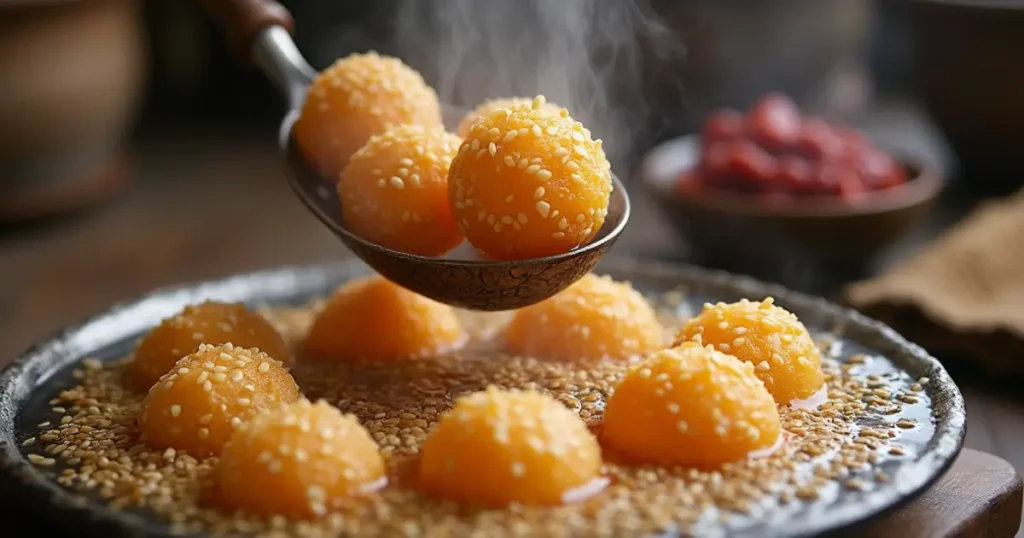
Tips for Perfecting Your Asian Dessert Skills
Mastering the delicate art of Asian desserts takes practice, but with the right techniques, anyone can create sweets that not only taste amazing but also capture the essence of Asian culture. Here are some pro tips to help you perfect your dessert-making skills and impress with every bite.
Mastering the Art of Texture in Asian Sweets
One of the defining features of many Asian desserts is the perfect balance of texture. The goal is to achieve a delightful chewiness, smoothness, or creaminess that elevates the entire eating experience. Here’s how to get it just right:
- Chewy and Soft (Mochi, Tang Yuan, etc.)
To achieve the chewy texture found in desserts like Japanese mochi or Chinese tang yuan (sweet glutinous rice balls), it’s crucial to use glutinous rice flour (also known as sweet rice flour). Unlike regular flour, this variety has a high starch content that results in a chewy consistency. Be sure to knead the dough well to activate the starch and achieve the perfect chew. Steaming the dough, rather than baking, also helps retain moisture and softness. - Smooth and Silky (Egg Tarts, Custards, etc.)
For silky smooth textures, like those found in Chinese egg tarts or Filipino leche flan, it’s important to strain the custard mixture before baking or steaming. This removes any clumps and ensures a velvety consistency. Additionally, gentle cooking over low heat is essential to avoid curdling the custard. To make the process easier, consider using a double boiler for even heat distribution. - Creamy and Velvety (Mango Sticky Rice, Thai Coconut Pudding, etc.)
Many Southeast Asian desserts, such as mango sticky rice or Thai coconut pudding, rely on coconut milk for their creamy texture. To get the perfect consistency, use full-fat coconut milk and adjust the sweetness by adding sugar to taste. For a richer texture, let the dessert rest for a few hours before serving—it allows the flavors to meld together, making the dessert even creamier.
Experimenting with Flavors: From Sweet to Savory
Asian desserts are renowned for their creative use of flavors. While sweetness is common, many Asian sweets incorporate savory or herbal elements to create a more balanced and unique flavor profile. Here’s how to experiment with flavors:
- Pandan: A Fragrant Herbal Twist
Pandan, often referred to as the “vanilla of Southeast Asia,” is a fragrant leaf commonly used in desserts in Thailand, Indonesia, and Malaysia. Its sweet, grassy flavor adds a unique depth to cakes, puddings, and even ice cream. Pandan extract or pandan paste is the easiest way to introduce this flavor into your desserts, but if you can find fresh pandan leaves, you can also infuse them into coconut milk for an authentic taste. - Sesame: Nutty and Earthy
Sesame seeds are widely used in both sweet and savory dishes across Asia. In desserts like Chinese sesame balls (Jian Dui) or Japanese black sesame ice cream, roasted sesame provides a nutty, earthy flavor that contrasts beautifully with the sweetness. Sesame paste (tahini-style) is often used in fillings for pastries or to add richness to ice cream. Experiment with adding sesame seeds or sesame oil to traditional desserts for a complex and aromatic flavor boost. - Taro: Subtle, Sweet, and Earthy
Taro, a root vegetable, is widely loved for its subtle sweetness and earthy flavor. In desserts like taro cake, taro ice cream, or taro-filled buns, the key is to cook the taro thoroughly to release its natural sweetness. The flavor is delicate, making it a great pairing for coconut milk, which is commonly used in Asian desserts. Pureed taro can also be added to desserts like bubble tea or sago pudding to create a smooth, creamy texture. - Other Unique Flavors
Other flavors like lychee, longan, matcha, and rose water are popular in Asian desserts and can be used to create a variety of exciting combinations. Experimenting with floral, fruity, or even savory flavors like miso can add surprising twists to classic treats.
Presentation Tips for Traditional Asian Desserts
In Asian culture, food presentation is just as important as the flavor. The beauty of a dessert can elevate the entire dining experience. Here are some presentation tips to make your Asian desserts visually stunning:
- Play with Color
Asian desserts often feature bright, natural colors that make them visually appealing. For example, the green of matcha, the golden hue of mango sticky rice, or the deep purple of taro are all striking shades that can make your desserts pop. Use colorful ingredients or edible flowers (like orchids or jasmine) to garnish your dishes. Matcha powder can also be lightly dusted over desserts for a rich green finish, while gold leaf adds an elegant touch. - Use Traditional Serveware
To complete the Asian aesthetic, consider serving your desserts in traditional Asian dishware like small porcelain bowls, bamboo baskets, or wooden plates. This not only makes your dessert look beautiful but also connects the dish to its cultural roots. For example, serve matcha-flavored desserts in Japanese tea cups, or present Chinese egg tarts in small, circular dim sum-style steamer baskets. - Add Simple Garnishes
Garnishes such as shredded coconut, sesame seeds, or a sprig of mint can elevate your presentation. A small spoonful of sweet red bean paste or a dollop of coconut cream on top of a dessert can add visual interest and flavor. For desserts like mango sticky rice, you can arrange the mango slices in a fan shape for a more elegant presentation. - Use Textural Contrast
Adding contrast between the textures in your presentation can make the dessert more exciting. For example, serve a creamy coconut pudding alongside a crunchy sesame ball, or pair a smooth taro cake with crispy fried wonton wrappers for variety. This not only makes the dessert more appealing but also adds to the overall sensory experience. - Minimalist Style
While many Asian desserts feature intricate designs, a minimalist approach can be just as effective. Keep the presentation clean and simple, focusing on the natural beauty of the dessert. A single, perfectly placed piece of mochi or a scoop of matcha ice cream in a delicate bowl can be as impressive as a more elaborate creation.
By focusing on texture, experimenting with bold flavors, and presenting your Asian desserts with elegance, you can take your dessert-making skills to the next level. These tips will help ensure that your desserts not only taste delicious but also look stunning, offering a complete sensory experience for your guests or family.
Conclusion: Bring the Sweetness of Asia to Your Kitchen
Now that you’ve explored the world of traditional Asian desserts, it’s time to bring that sweetness into your own kitchen! Making these desserts at home allows you to experience the rich cultural heritage and diverse flavors of Asia, all while mastering unique techniques and ingredients that have been perfected over centuries. From the chewy mochi of Japan to the creamy coconut puddings of Southeast Asia, each dessert tells a story that connects you to a particular culture and its traditions.
Don’t be afraid to experiment with different flavors and textures. Asian desserts offer endless possibilities, from sweet and savory combinations to herbal notes and vibrant color contrasts. Whether you’re drawn to the familiar tastes of your favorite dishes or eager to explore something new, there’s a whole world of dessert-making waiting for you.
So, gather your ingredients, roll up your sleeves, and start creating these delicious treats. Not only will you impress your family and friends with your culinary skills, but you’ll also gain a deeper appreciation for the beauty and diversity of Asian sweets. Happy baking (and tasting)!
FAQ: Everything You Need to Know About Asian Desserts
Print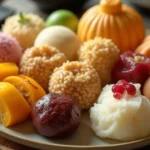
Mango Sticky Rice Recipe
- Total Time: 40 minutes
- Yield: 4 servings
Description
Mango Sticky Rice is a beloved traditional Thai dessert made with glutinous rice, coconut milk, and ripe mangoes. This sweet treat is easy to prepare, with a 40-minute total time, and is perfect for anyone looking to enjoy a refreshing and authentic Asian dessert. The rice is steamed to perfection and topped with a rich coconut sauce, making it both satisfying and delicious. It’s gluten-free, vegetarian, and can be enjoyed by anyone craving a taste of Southeast Asia. Garnish with toasted sesame seeds or mung beans for added crunch and flavor
Ingredients
- For the Sticky Rice:
1 ½ cups water (for soaking and steaming)
- For the Coconut Sauce:
1 teaspoon cornstarch (optional, for thickness)
- For Serving:
Notes
- Calories: 350 kcal
- Fat: 14g
- Carbohydrates: 55g
- Protein: 4g
- Sugar: 20g
- Prep Time: 10 minutes
- Cook Time: 30 minutes
- Category: Dessert
- Cuisine: Southeast Asian, Thai
Nutrition
- Calories: 350
Keywords: coconut sticky rice, Mango sticky rice, Thai dessert, traditionnal asian desserts
1. What are some popular Asian desserts I can try making at home?
Some popular Asian desserts to try include Mango Sticky Rice (Thailand), Matcha Mochi (Japan), Egg Tarts (Hong Kong), Taro Cake (China), and Klepon (Indonesia). Each dessert brings unique flavors and textures that are sure to impress!
2. Can I use substitutes for traditional ingredients in Asian desserts?
Yes, you can substitute some ingredients to accommodate dietary restrictions or availability. For example, you can replace glutinous rice flour with regular rice flour, though it may affect the texture. Coconut milk can also be substituted with almond milk for dairy-free options. Experimenting with substitutes is part of the fun, but be mindful of how they may alter the flavor and texture of the dessert.
3. How do I get the perfect chewy texture in desserts like mochi?
To achieve the perfect chewy texture in mochi, use glutinous rice flour (sweet rice flour), and make sure to knead the dough well. Steaming the dough is essential to keep it soft and chewy. Be sure to steam it long enough to activate the starches for that iconic chewy consistency.
4. How can I incorporate more flavors into my Asian desserts?
Asian desserts often feature unique flavors such as pandan, taro, matcha, sesame, and coconut. You can experiment with these flavors by adding pandan paste to cakes, using taro in ice cream or buns, or incorporating matcha powder into cookies or mochi. Don’t be afraid to try both sweet and savory combinations, such as sesame and red bean paste.
5. Are Asian desserts hard to make?
It depends on the recipe! Some Asian desserts, like Mango Sticky Rice or Egg Tarts, are relatively simple and easy to make. However, others, such as mochi or baked mooncakes, require more precision and skill. With the right guidance, patience, and practice, anyone can make these delicious desserts at home.
6. Can I make Asian desserts in advance?
Yes, many Asian desserts can be made ahead of time and stored for later. Mochi, egg tarts, and coconut puddings can be prepared a day or two before serving. Just be sure to store them properly in airtight containers to maintain their freshness and texture. Some desserts, like sago pudding and mango sticky rice, taste even better after resting for a few hours.
7. How should I serve Asian desserts for the best presentation?
Presentation is key in Asian cuisine! Use traditional dishware, such as small bowls or bamboo baskets, to serve your desserts. Garnish with edible flowers, sesame seeds, or shredded coconut for extra flair. You can also play with the color contrast of your dessert to create an elegant and visually appealing presentation. For example, serve bright matcha desserts with a touch of gold leaf or a sprig of mint for added sophistication.
8. Are Asian desserts gluten-free?
Many Asian desserts are naturally gluten-free, such as mochi, tapioca pearls (used in bubble tea), and sticky rice-based sweets. However, some recipes may contain wheat-based ingredients, like in egg tarts or baked goods. Be sure to check the recipe or use gluten-free substitutes to accommodate any dietary needs.
9. What equipment do I need to make Asian desserts?
To make most Asian desserts, you’ll need a few basic kitchen tools like a steamer (for mochi and rice cakes), whisk, mixing bowls, and measuring spoons. For more advanced desserts, such as egg tarts, a tart pan and baking sheets are helpful. Some recipes may also require a mortar and pestle to grind ingredients like sesame seeds or matcha.
10. Where can I find the ingredients for Asian desserts?
Many ingredients for Asian desserts, such as glutinous rice flour, matcha powder, pandan extract, and taro, can be found in specialty Asian grocery stores or online. If you don’t have access to a local store, online retailers like Amazon or Asian supermarkets often carry these ingredients.

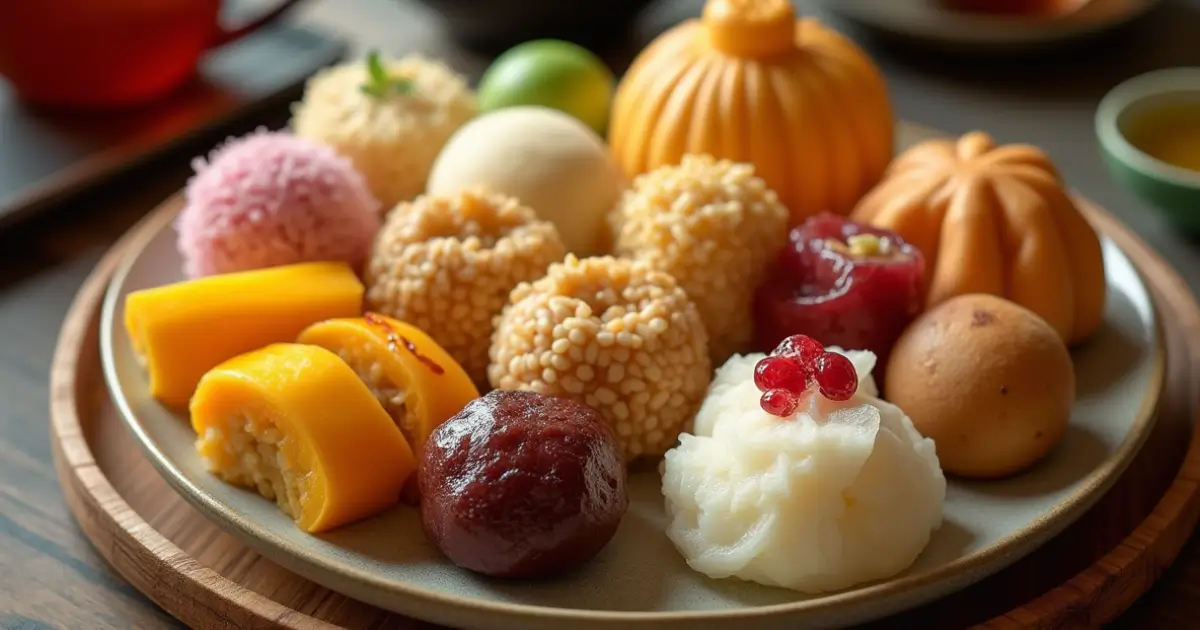

Leave a Comment